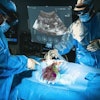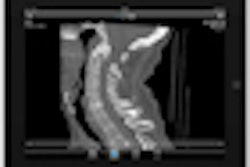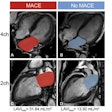Dear AuntMinnie Member,
If you're thinking about setting up a dedicated lab for 3D processing of imaging studies, don't make a move until you've read the first article in a two-part series by senior editor Erik L. Ridley that we're highlighting this week in our Advanced Visualization Digital Community.
Many radiology departments are establishing dedicated labs to create a centralized location for 3D image processing. The images offer real value for referring physicians and patients but can be laborious to create, according to Dr. Eliot Siegel from the University of Maryland. Careful planning can help imaging facilities make the process go more smoothly.
For one thing, sites need to determine appropriate staffing levels for 3D labs, and they also need to ensure that 3D technologists are appropriately trained -- a challenge in itself, given the paucity of 3D training programs. Labs also need to address workflow issues such as processing times and billing.
Get more advice by clicking here, and check in next week for part 2 of the series.
Tablet PC guides MRI scanner
Another article in the community reports on research at Stanford University, where investigators have adapted a tablet PC to function inside an MRI scanning room -- where powerful magnetic fields usually wreak havoc with electronic devices.
The researchers believe that tablet PCs could give interventional radiologists more control over scanner functions, which can be a tricky business during MRI-guided studies. Tablet PCs can also be loaded with apps that guide particular interventional scanning sequences.
You might think that the researchers based their work on Apple's ubiquitous iPad tablet, but they didn't. Find out why by clicking here, or visit the Advanced Visualization Digital Community at av.auntminnie.com.



















